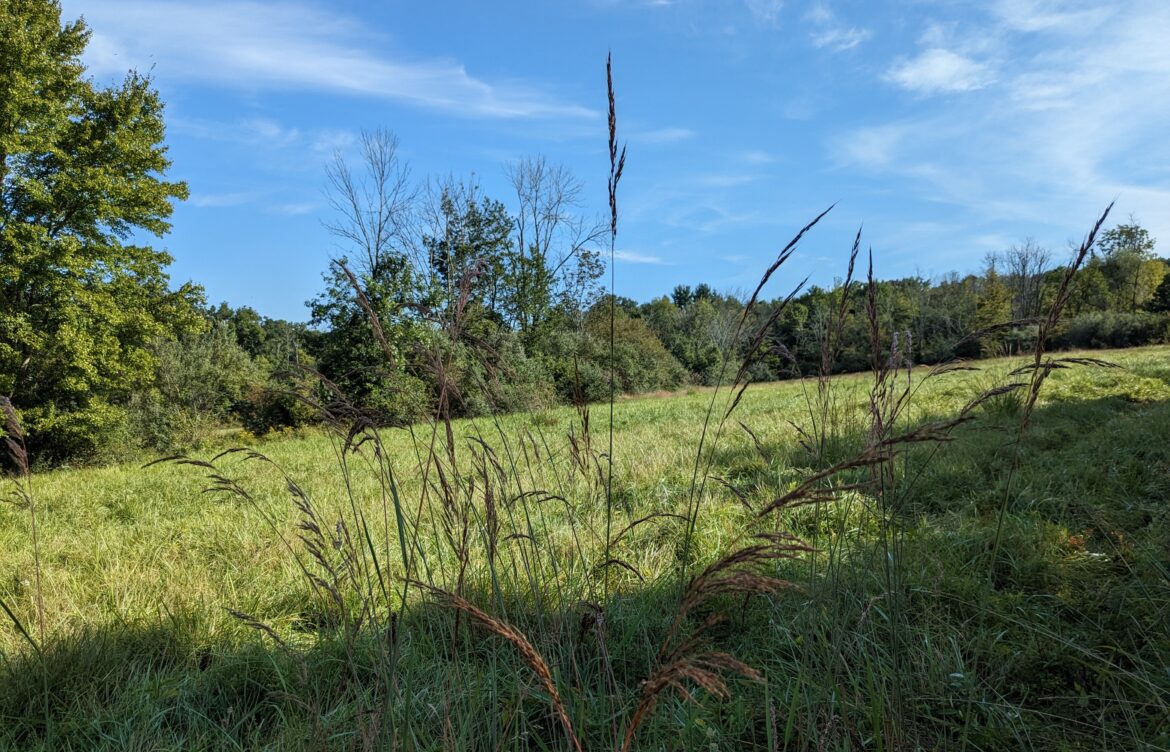When one thinks of environmental conservation and open space stewardship, the term “green cemetery” is not likely to come to mind. In fact, many Americans know little about green burial (also known as natural burial) even though it’s how most of the world’s population inter their dead. A growing trend for U.S. families seeking a final resting place is the return to low impact, eco-friendly burial practices.
The Unitarian Universalist Congregation of Princeton. is planning to establish a green cemetery in Hopewell Township, on land adjacent to protected D & R Greenway preserves. Plans for the project were heard and approved by the Hopewell Township Planning Board in September 2024.
“Other than being permanently preserved land, I can’t imagine a better use for this site,” commented Linda Mead, President and CEO of D & R Greenway Land Trust, at September’s meeting. “A green cemetery is the least invasive use of a site next to other conservation lands. It is beneficial to wildlife and birds. We look forward to working with the Universalist Unitarian Congregation to ensure this is a very positive presence here in the community.”
Traditional cemeteries can have a negative impact on the environment and even pose a risk of groundwater contamination. Concrete grave vaults crack and degrade over time, and toxic chemicals from coffin varnishes, preservatives, and embalming chemicals can leak into the surrounding soil.
In a green cemetery, the deceased are buried in simple shrouds or boxes made of biodegradable materials. Bodies are not embalmed with chemicals, allowing them and the shroud or box to decompose and return to the earth naturally. Funeral homes and cemeteries practicing natural burial are guided and certified by the Green Burial Council.
Lee Webster, former President of the Green Burial Council, explained the particulars of natural burial to the Hopewell Township Planning Board and answered questions on the environmental impact and public safety implications of the proposed cemetery.
“Green burial is not new,” shared Webster. “It is actually the oldest form of burial. It’s simple. It’s green. Most of the world still does it this way.”
In the American funeral industry, green burial is a growing market projected to rise from $572 million per year in 2021 to $1.2 billion per year by 2030 [Minnesota Star Tribune, October 2024]. Customers find green burial more natural, more economical, and more environmentally friendly than traditional embalming and burial or cremation.
Spurred by a major gift to the congregation in 2019 for the purpose of establishing a green cemetery, a “UU Princeton Natural Burial Team” was formed. Land was purchased near Stonybrook Road, and now that Planning Board approval has been attained, plans can proceed for a natural-looking burial ground that blends in with the surrounding wilderness.
Other than a small parking lot and signage, very little visible impact to the site’s open field will be seen. Graves will be marked with flat fieldstones rather than standing headstones. Graveside ceremonies will be small and infrequent, based on the congregations’s current population. Native species will be planted, and paths provided for people navigating the cemetery.
“Our goal is to have it be a beautiful place to take a walk,” shared one congregation member.
Preservation of the land’s beauty, conservation of its soil and water integrity, and honoring the deceased in a natural way is the goal of green cemeteries.
An interesting example of a green cementary is Eloise Woods in Texas, and is just one of over 470 green cemeteries in the US and Canada, according to Lee Webster, speaker, educator, author, and funeral reform advocate, New Hampshire Funeral Resources, Education & Advocacy Director, and Former President Green Burial Council International. “There are plenty to point to, including other UU and other religious grounds.” *
New Jersey currently has four hybrid cemeteries that include natural burials alongside traditional ones, and only one totally green cemetery: the historic Steelmantown Cemetery in Woodbine. If all goes as planned, the Universalist Unitarian Congregation’s green cemetery will soon be one more provider of an environmentally friendly final resting place in our state.
* Edited on Oct. 29 to remove an example incorrectly identified as a green cemetery and to incorporate expert insights from Lee Webster.
* Edited on Nov. 4 to change “church” to “congregation”







